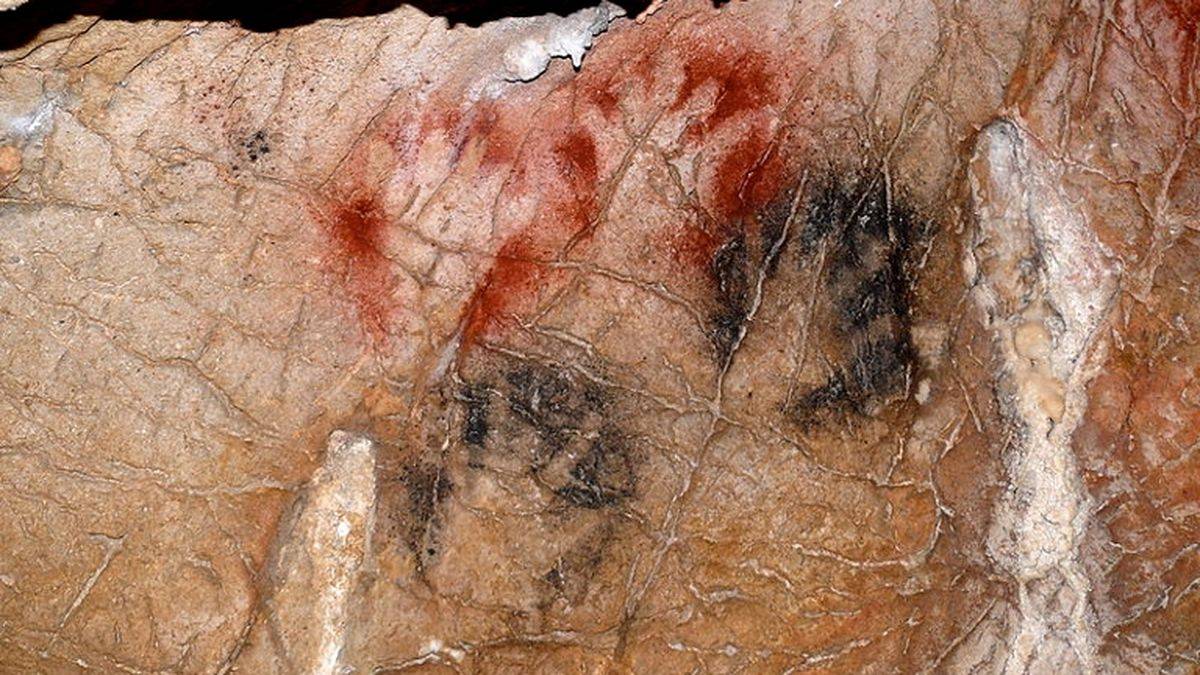 The hands | ©Yoan Rumeau / CC-BY-SA
The hands | ©Yoan Rumeau / CC-BY-SAGargas’ mutilated hands
Mutilated hands were discovered here in the beginning of the 20th century.
And yet, the cave was excavated many times: in 1865, doctor Garrigou and his friend De Chastaigner explored Gargas for the first time. Then, Félix Régnault and the famous archaeologist, abbot Breuil, in the 20th century…
In 1906, Félix Régnault discovered handprints on the wall’s caves. Red or black hands. Oh, but we already saw hands like that, in cave of Bédeilhac, do you remember? How did they draw them?
They put the hand on the wall and blew colour on it: a blend of yellow ochre and iron oxide (red). The hand let its print on the wall, surrounded by the colour.
But here, we have about 100 prints and each time, it’s the left hand we see.
Fingers are visible, but, strangely, some are folded or mutilated. Anyway, they’re missing.
Oh my gosh, so weird! We have children and adults’ hands, either deprived of one or several fingers, or one or several phalanxes.
Mysterious rite, extreme cold?
Several theories: a strange rite? Extreme cold causing frostbites? A kind of pathology like leprosy or Raynaud's disease, an illness wearing away phalanxes but let the thumb entire, like our hands here?
Or maybe it’s deliberate: those who put their hands on the walls maybe folded some of their fingers on purpose?
Oh, you can imagine we checked this last hypothesis: no doubt, the wall paintings were made by blowing, on real amputee hands...
Abbot Breuil and his colleague Cartailhac said Gargas is the only European cave showing hands like that. In Australia, we find similar paintings, some ″ethnic″ mutilations.
But finally, here, we have the combination of cold, of nutritional deficiency and untreated wounds.
